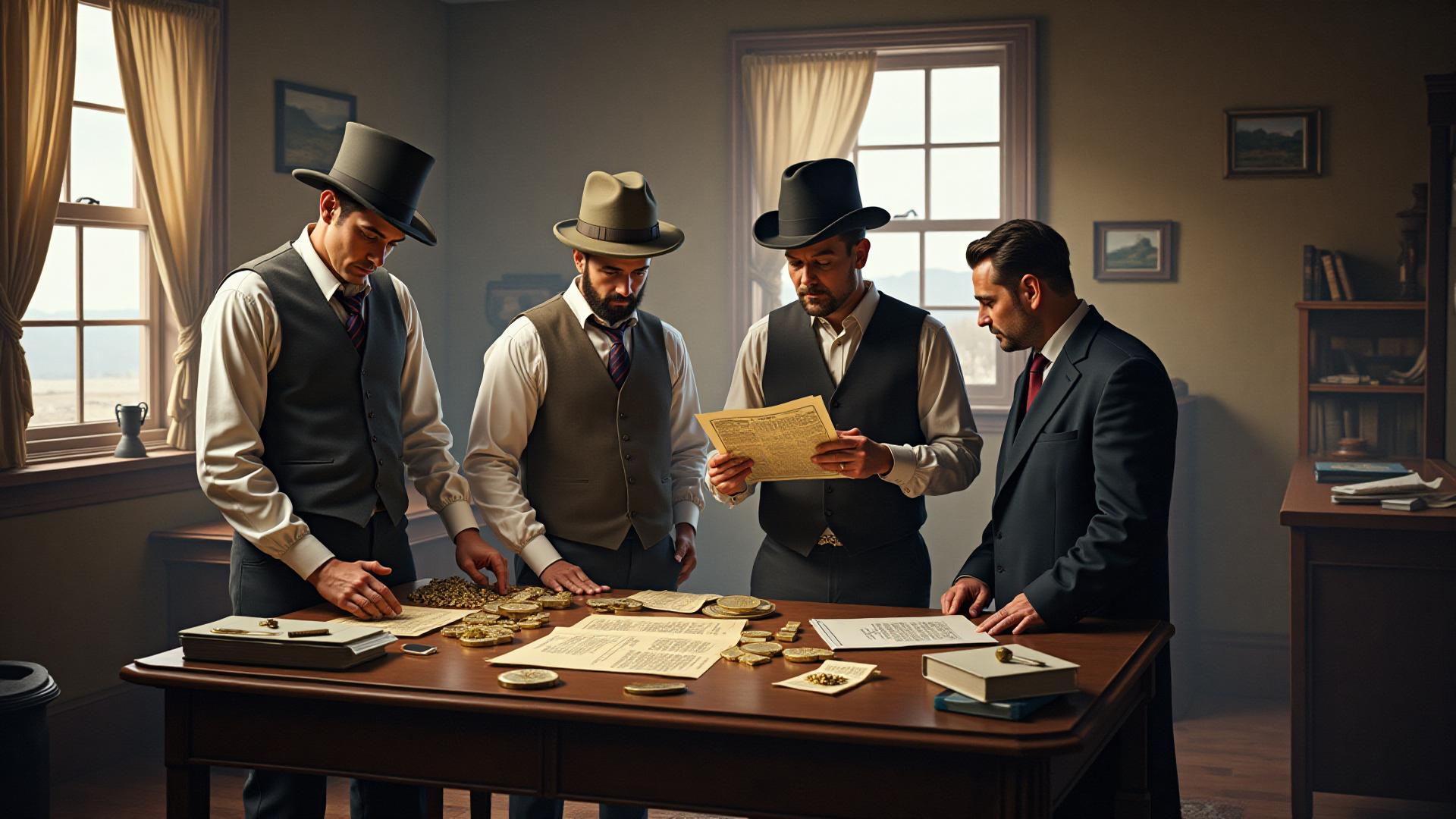While the Carmack party made the original discovery, hundreds of other prospectors, claim speculators, and entrepreneurs shaped the Klondike Gold Rush. Many who became wealthy didn't find gold themselves—they found ways to profit from those who did.
The Early Winners: Eldorado Creek
While Bonanza Creek was rich, Eldorado Creek (a tributary) proved spectacularly richer. Those who staked claims there in the first days after the discovery became the true "Klondike Kings."
The Richest Claims
Some Eldorado Creek claims yielded over $1 million in 1890s dollars—equivalent to $30+ million today. The legendary richness of certain claims created the mythology that drew hundreds of thousands north.
- Claim #16: Reportedly produced $600,000 in first two years
- Claim #29: Purchased for $35,000, yielded over $500,000
- Claim #30: One of the richest, producing consistent high yields
Antoine Stander – Rags to Riches to Rags
Antoine Stander struck it rich on Eldorado Creek, becoming one of the wealthiest men in the Klondike. However, like many sudden millionaires, he mismanaged his wealth. Stander invested poorly, spent lavishly, and ultimately died with diminishing means—a cautionary tale about the difficulty of managing sudden wealth.
His story illustrates a common pattern: finding gold was difficult, but keeping wealth proved even harder. Many who struck it rich lost everything to poor investments, fraud, gambling, or simple extravagance.
Alex McDonald – "The King of the Klondike"
Alex McDonald wasn't the richest miner, but he became the most famous through flamboyant promotion and clever land speculation. McDonald understood something crucial: you didn't need to mine gold yourself—you could profit from leasing claims, buying and selling property, and financing other miners' operations.
McDonald's Business Model
- Purchased partial interests in multiple claims rather than working one claim
- Leased claims to others in exchange for percentage of gold found
- Financed mining operations in exchange for ownership stakes
- Bought and sold properties as speculation
- Leveraged credit to control more resources than his capital alone would allow
His career exemplifies how many fortunes came from services and speculation rather than picking and shoveling. He made more money from business acumen than from actual mining.
Robert Henderson – The Forgotten Prospector
Some historians credit Robert Henderson as finding the first detectable gold in the region (on Gold Bottom Creek), several weeks before the Bonanza Creek discovery. Henderson was an experienced prospector who had been searching the area for years.
However, Henderson's claim was less rich than Bonanza Creek, and—crucially—he held prejudiced views against Indigenous peoples. When Skookum Jim tried to tell him about the Bonanza find, Henderson reportedly dismissed him because of his race.
This racist attitude cost Henderson dearly. He received limited recognition and missed participating in the richest discovery. His story demonstrates how prejudice could be economically as well as morally ruinous.
The Real Moneymakers: Service Providers
The most reliable fortunes often went not to miners but to those who outfitted prospectors, transported goods, or sold services:
Merchants & Outfitters
Seattle and San Francisco outfitting firms made consistent profits selling supplies. Every prospector needed a year's worth of goods—guaranteed sales regardless of whether they found gold.
"The ones who made money in the gold rush were the ones selling shovels."
Shipping Companies
Shipping lines charged premium prices to transport people and goods north. Unlike mining, shipping was predictable business with steady revenue. Companies like Pacific Steam Whaling Company and Alaska Commercial Company dominated this trade.
Saloon & Hotel Owners
Dawson City saloons, hotels, and restaurants charged astronomical prices. A night's lodging could cost $10-20 (equivalent to $300-600 today). Successful operators like Belinda Mulrooney built hospitality empires.
Bankers & Assayers
Those who weighed, assayed, and banked gold dust took percentage cuts on every transaction. Banks in Dawson became fabulously profitable by charging fees for basic services that cost little to provide.
Joe Ladue – Founder of Dawson City
Joe Ladue never found much gold, but he made a fortune by anticipating where the boomtown would emerge. When the Bonanza Creek discovery occurred, Ladue immediately:
- Purchased land at the confluence of the Klondike and Yukon Rivers
- Laid out streets and plotted town lots
- Sold lots at premium prices as thousands arrived
- Established a sawmill to provide lumber for construction
Ladue's fortune came not from finding gold but from recognizing that miners would need a town—and being first to create one. He sold real estate, provided essential services, and profited from every new arrival.
The Railways & Infrastructure Builders
The White Pass & Yukon Route Railway construction project (1898-1900) enriched many contractors, engineers, and suppliers. Though completed just as the rush ended, the railway represented massive capital investment and provided work for thousands.
Its primary backer, Michael J. Heney, demonstrated how infrastructure development could generate wealth even when gold mining declined. The railway outlasted the rush, serving the region for decades.
The Economics of a Gold Rush
A pattern emerges from studying Klondike entrepreneurship: the most consistent profits came not from mining but from serving miners. This pattern has repeated in every resource boom throughout history:
- Those who find resources: High risk, mostly failure, occasional spectacular success
- Those who serve finders: Lower risk, steady profits, reliable growth
- Those who finance operations: Lowest risk, guaranteed returns through interest/ownership
Lessons for Modern Readers
The Klondike entrepreneurs demonstrated timeless business principles:
- Timing matters: Being first to stake claims or establish businesses provided huge advantages
- Services beat speculation: Providing essential services generated more reliable wealth than prospecting
- Leverage information: Those who recognized trends and acted quickly profited most
- Diversify: The wealthiest didn't put everything into one claim—they spread risk
- Infrastructure survives booms: Railways, buildings, and systems outlast individual strikes
The Klondike wasn't just about gold—it was about recognizing opportunity, taking calculated risks, and building systems that would last. Those lessons remain relevant today.
